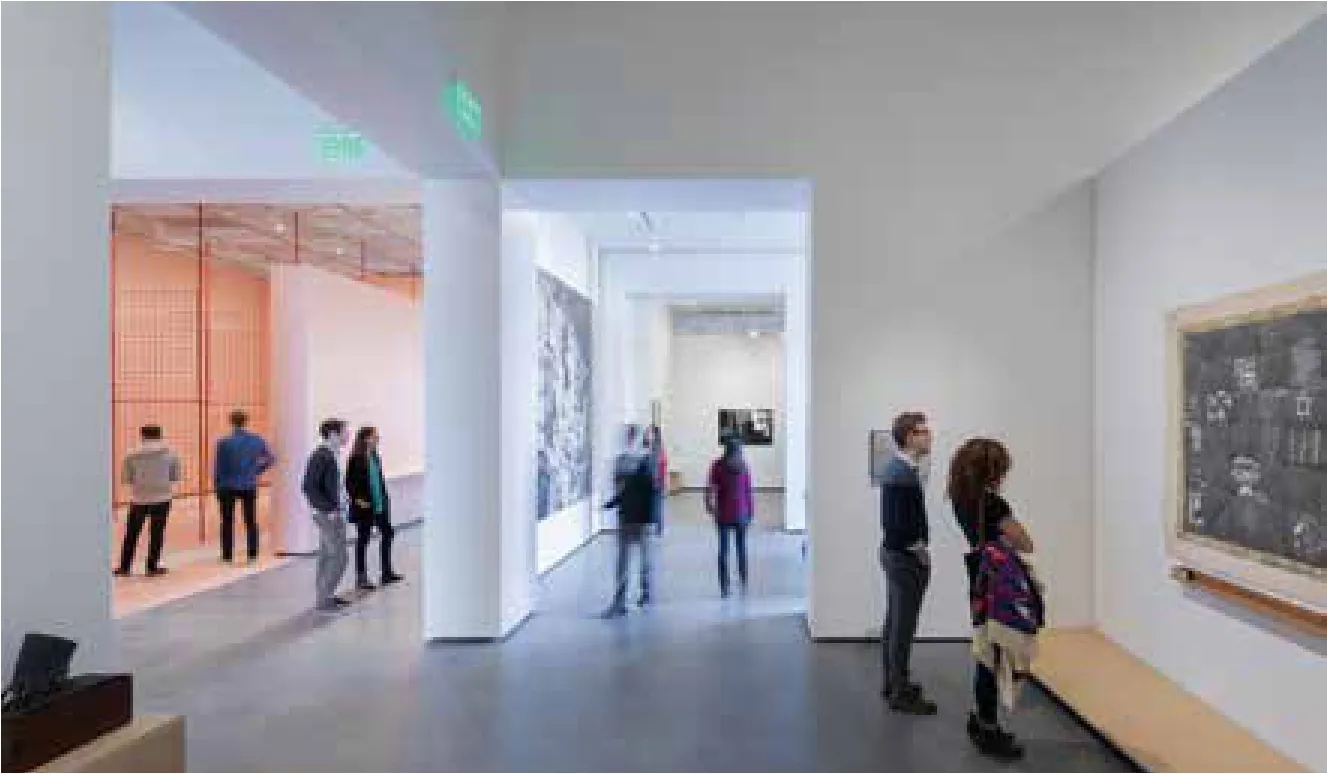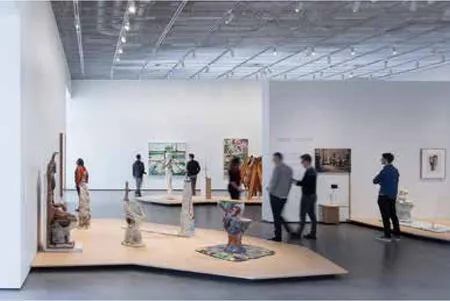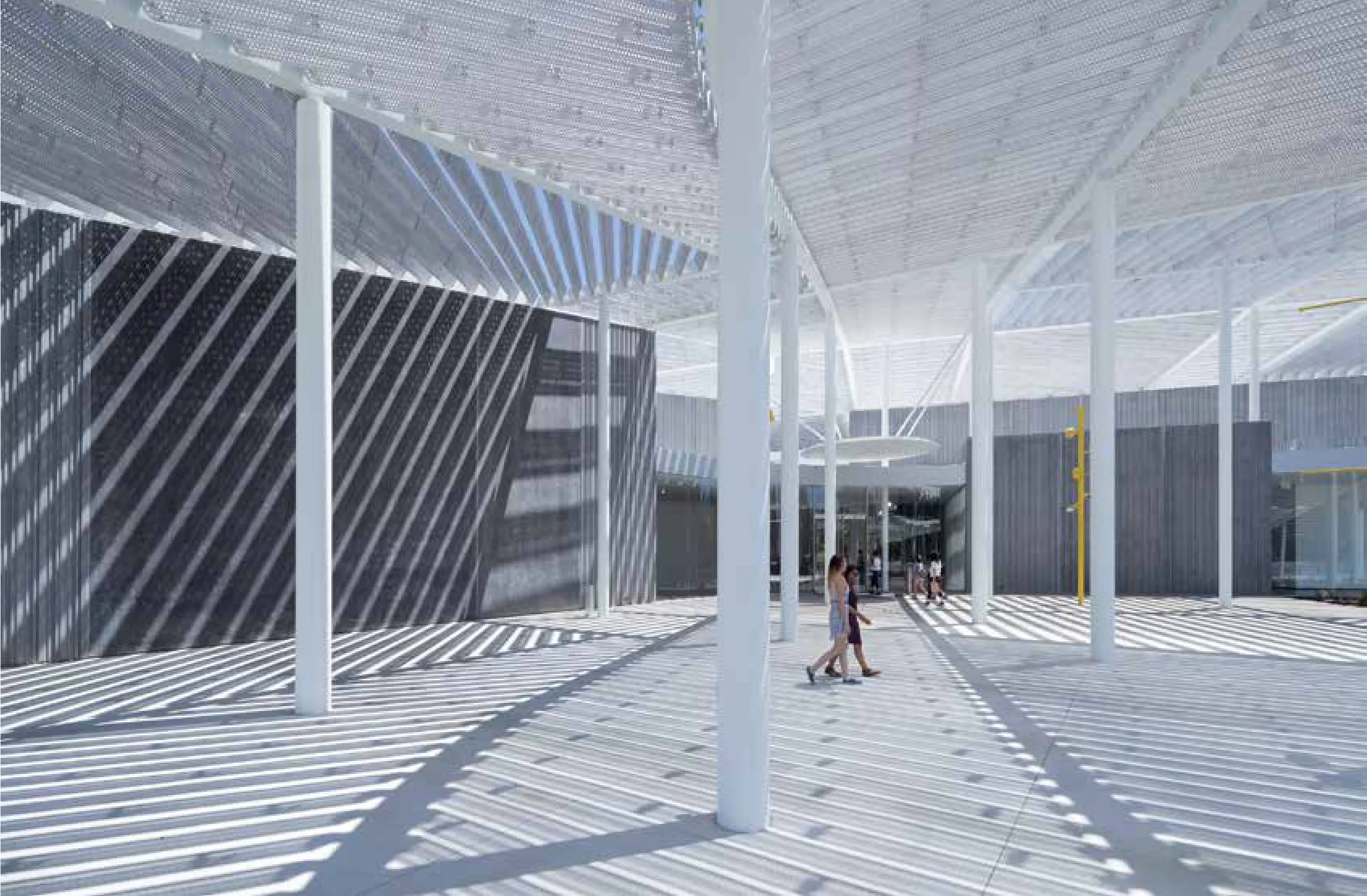Jan Shrem and Manetti Shrem艺术博物馆
2017-12-27IwanBaan
Jan Shrem and Manetti Shrem艺术博物馆
Jan Shrem and Maria Manetti Shrem Museum of Art
业主:加利福尼亚大学戴维斯分校
位置:美国戴维斯
面积:2 700平方米/ 29 000平方英尺
时间:2013年,竞赛投标,一等奖;2016年,建成
设计公司:SO–IL Architects
设计团队:
竞赛:Florian Idenburg, Ilias Papageorgiou, Jing Liu, Danny Duong, Seunghyun Kang, Nile Greenberg, Pietro Pagliaro,Andre Herrero, Madelyn Ringo, Jacopo Lugli
落地: Florian Idenburg, Ilias Papageorgiou, Jing Liu, Danny Duong, Kevin Lamyuktseung
建筑合作:Bohlin Cywinski Jackson
摄影:Iwan Baan
Client: University of California, Davis
Location: Davis, USA
Area: 2 700 m² / 29 000 sf
Status: Competition entry, 2013, First Prize; Completed 2016
Design company: SO–IL Architects
Team:
Competition: Florian Idenburg, Ilias Papageorgiou, Jing Liu, Danny Duong,
Seunghyun Kang, Nile Greenberg, Pietro Pagliaro, Andre Herrero, Madelyn Ringo,Jacopo Lugli
Realisation: Florian Idenburg, Ilias Papageorgiou, Jing Liu, Danny Duong, Kevin
Lamyuktseung
Associate Architect: Bohlin Cywinski Jackson
Photographer: Iwan Baan
Jan Shrem and Maria Manetti Shrem 艺术博物馆位于加州大学戴维斯分校,是校园内乃至戴维斯城的第一座当代艺术博物馆。设计团队SO–IL紧密关注博物馆设计的语境,将其社会性与物质性要素以一种创新的方式组合起来,为培育、滋养丰富的校园交流氛围提供了可能性。最终的设计为未来的博物馆提供了一种新的模型——不是孤立、排外的,而是开放、可持续的,它不是一个静态的神社,而是一个不断进化的社会有机体。
The Jan Shrem and Maria Manetti Shrem Museum of Art at the University of California at Davis is the fi rst contemporary arts museum for the university and the city of Davis. Close attention to the museum’s many contexts led to an innovative organization of its social and physical components that enables the cultivation of relationships. The result o ff ers a model for the future museum that is neither isolated nor exclusive, but open and permeable; not a static shrine, but a constantly evolving public event.

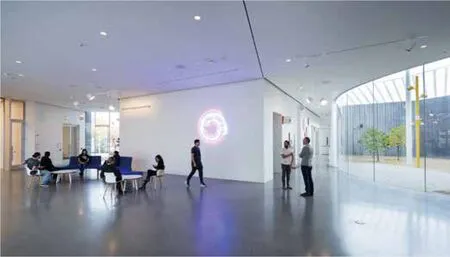
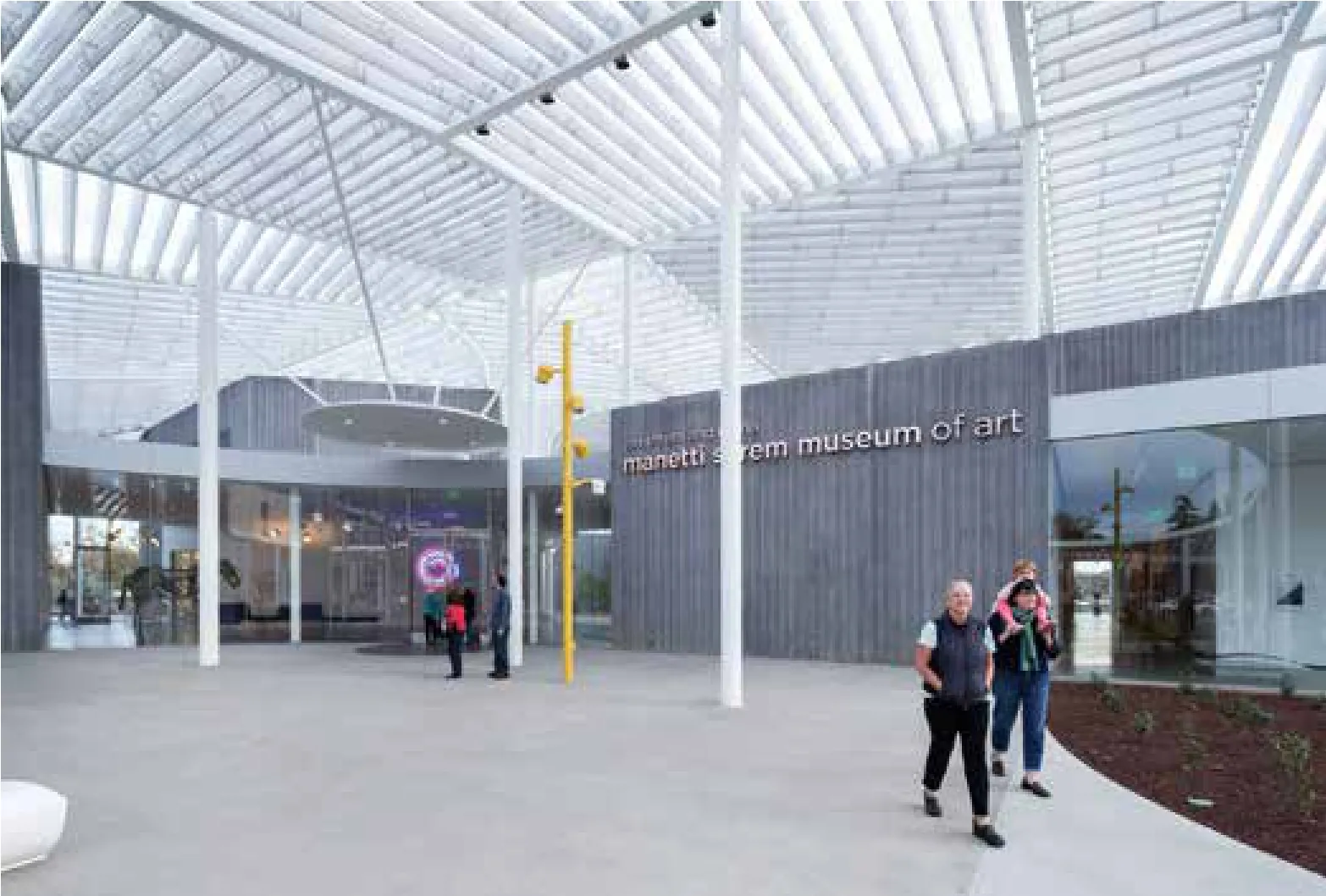
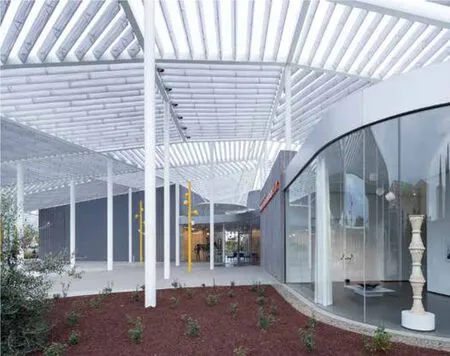
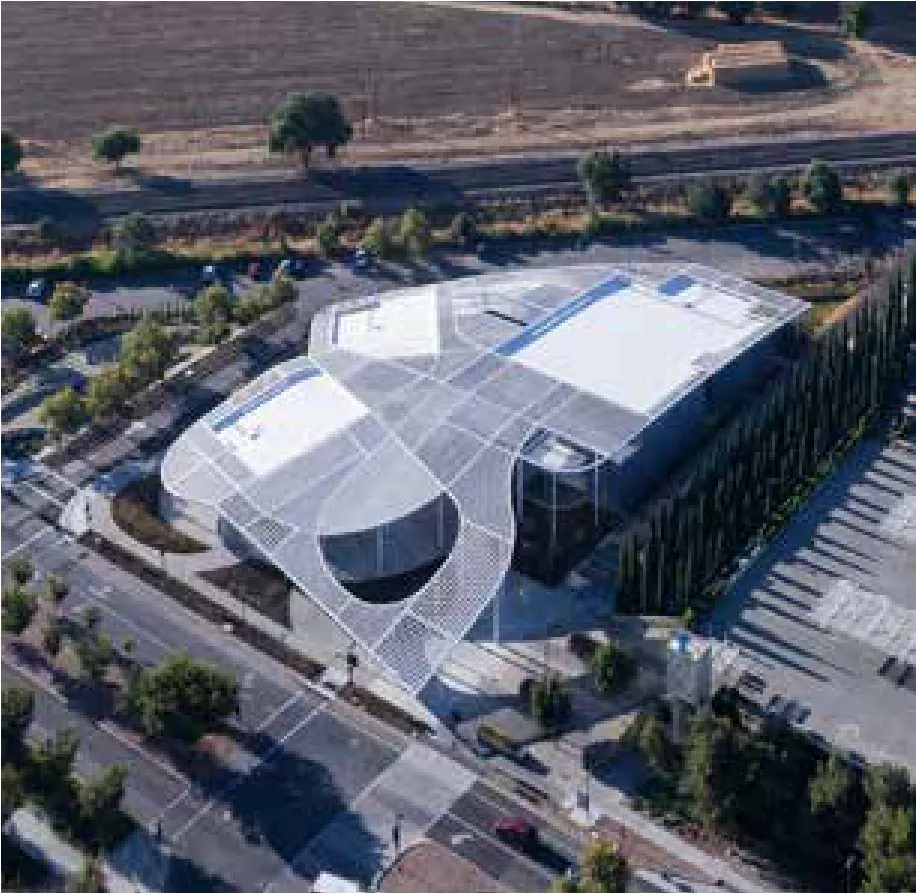
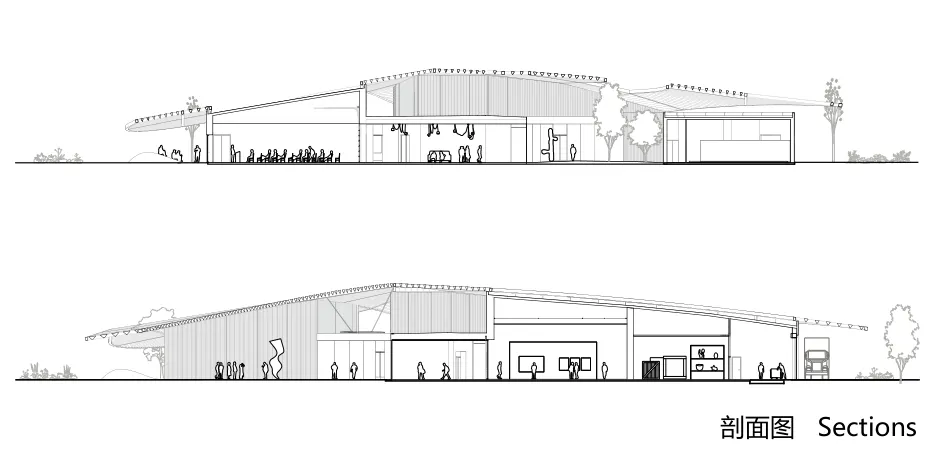

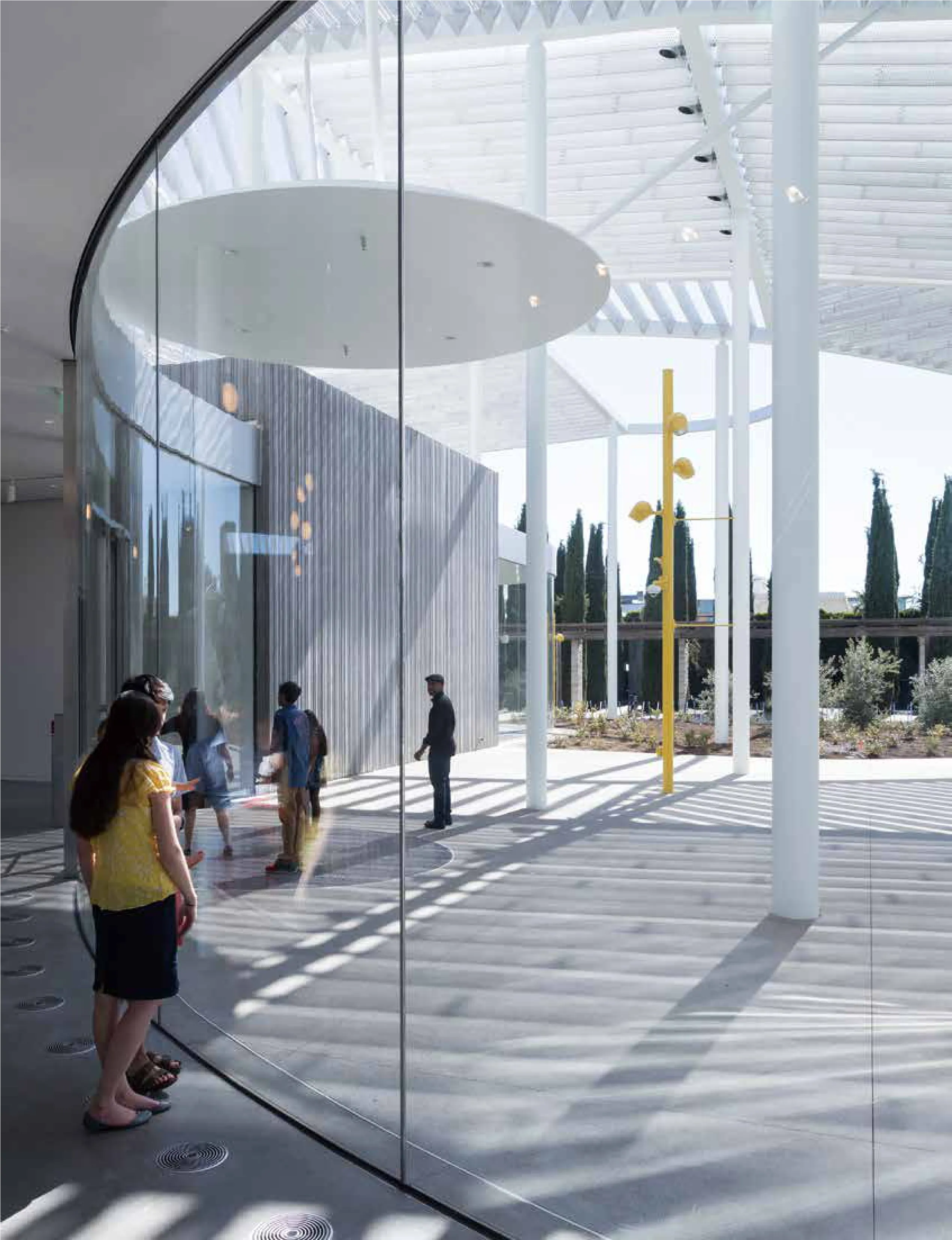

SO–IL事务所的设计增强了博物馆的多样化艺术编排,反映出加州大学校园内一脉相承的先锋艺术创作精神——一所曾培养出诸如Wayne Thiebaud、Robert Arneson以及William T. Wiley的学校。除了拥有向大厅开放的常规教室与艺术工作室之外,博物馆还像是一个进行中的实验,触发教学、创作、艺术交流等活动:瓦楞状屋面下的流动空间可以组织室外电影放映,玻璃围合而成的庭院内可布置室外雕塑展览。
建筑上方拱形的大屋顶与铝制的梁一起翻卷,向建筑与基地外延伸。这种对环境友好的形制,是设计对基地农业文化语境的一种回应,也宣告了校园内新的社会交流节点和象征的诞生。
顶盖之下是多样性的、通透的空间,强调了博物馆民主自由的姿态。博物馆坐落于校园边缘处,而其造型独特的顶盖吸引着外来的访客。公共广场上,光与影相互交织,有助于模糊城市与大学之间的界限。在室内,玻璃围合的大厅作为聚集讨论、学习与创客区,促进了交流活动。这些互相连接的室内空间与室外空间,为人们创造出非同寻常的体验以及学习艺术的机会,使之完成了博物馆的使命——让每一位到访者成为这里的学生。
占地50 000平方米的顶盖由定制的穿孔三角形铝制梁组成,它是技术与制造相结合的产物。从对样本反复进行光线效果研究,到大比例实验模型搭建,以及BIM建模,最终使材料的使用效率最大化,减少劳工成本,并且与设计、施工团队同步,确保了从数字模型到实际建筑转化过程的快速、流畅与高效。此外,博物馆超过了校方原本的预期,达到了LEED白金认证的标准。
SO–IL’s design amplifies the Museum’s diverse arts programming and reflects the legacy of avant-garde art making at the University, where talents such as Wayne Thiebaud, Robert Arneson and William T. Wiley were nurtured. With formal classrooms and art studios that open into the lobby, the Museum is a living experiment for teaching, making and interacting with art. Smooth zones of the corrugated façade allow for outdoor screenings and a glass-walled courtyard also functions as an outdoor gallery for sculpture.
The overarching ‘Grand Canopy’ extends a rolling form patchworked with aluminum beams over both site and building. An environmental silhouette, the design references the site’s agricultural context and announces a new social node and emblem for the University.
Beneath the canopy, the spatial qualities of diversity and transparency underscore the museum’s democratic stance. Casually taking root at the edge of the campus, the unique form of the canopy draws visitors from a distance. The subtle interplay of light and shadow across the public plaza helps blur the boundary between civic and institutional spheres. Inside, a glass-walled lobby invites interaction as the convergence of viewing, learning, and making areas. These interconnected interior and exterior spaces create informal opportunities for experiencing art and learning, supporting the museum’s mission to have all visitors become students.
The 50 000 square-foot Grand Canopy is composed of custom-built, perforated, triangular aluminum beams. It is the product of an intimate knowledge of both technology and craft. From light studies through iterative prototyping and large-scale mock-ups, BIM modeling aided to maximize material e ffi ciency, cut labor costs, and synchronize the designbuild team, ensuring fast-paced and smooth transitions between physical and digital modes. Exceeding university requirements, the museum achieves LEED Platinum rating.

